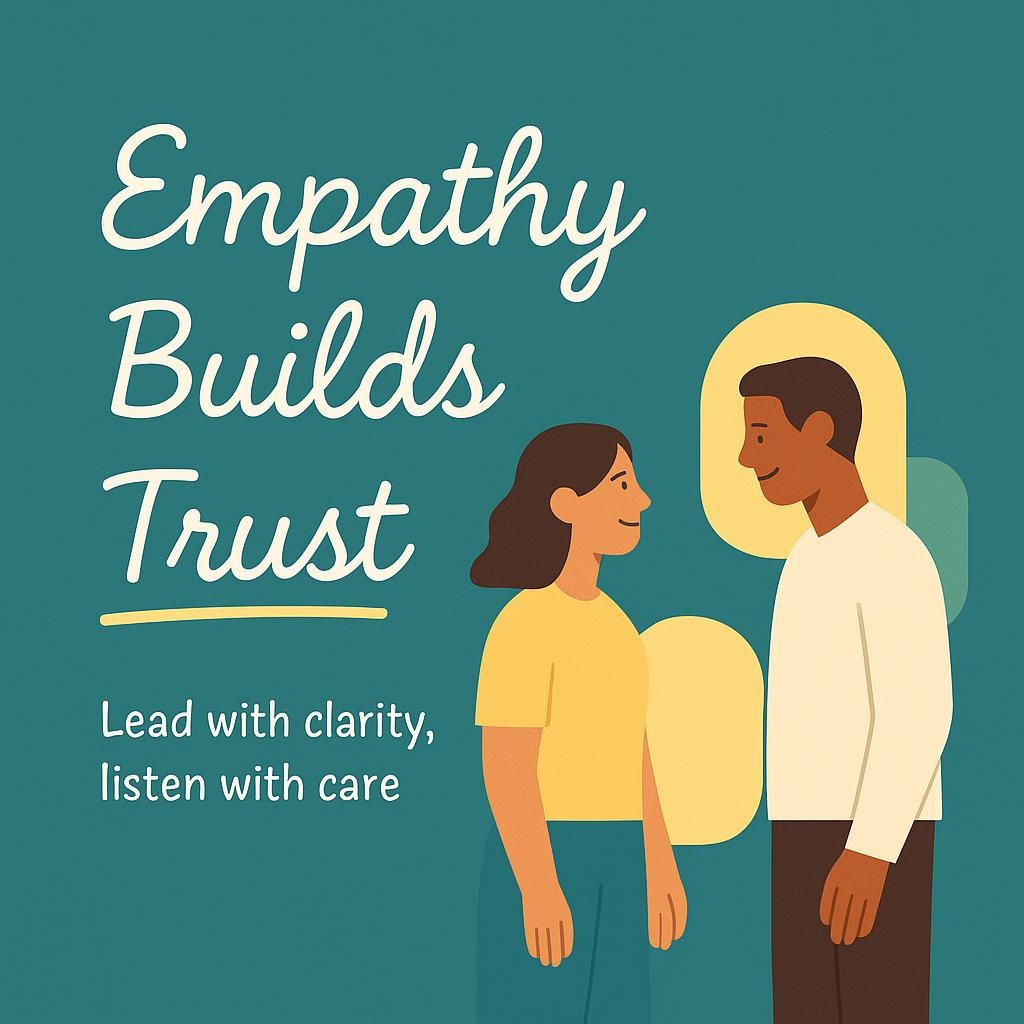Can empathy be the leadership move that changes everything?
Why this matters
Empathy is often written off as soft or optional, but Nancy Vepraskas shows it is central to how leaders earn trust, hold people accountable, and keep teams honest and productive. She calls leadership a journey, not a one-time fix, and empathy is one of the small, steady steps that shapes how people experience you as a leader .
A story that will sound familiar
Think of a manager who hits every metric. The charts look good, but people stop sharing bad news. Meetings become displays, not conversations. After a while the team misses warning signs and momentum fades. This isn’t a skills problem, it’s a safety problem. Vepraskas points out that leaders who make space for honest talk, and who correct with care, stop this slow erosion before it becomes a crisis .
The real gift hidden in the book
Here is the quiet but powerful truth: empathy is the backbone of your leadership brand. Your brand is not a slogan, it is the pattern of tiny interactions you create every day. Those micro-behaviors—how you respond to bad news, how often you check in, whether feedback feels like help or punishment—decide whether people trust you enough to bring their real problems and their best ideas .
Three forms of empathy that actually move teams forward
- Clear feeling checks, not guessing. Stop assuming you know how people feel. Vepraskas recommends regular, focused check-ins that surface wins, frustrations, and development needs. When leaders ask clear questions, people feel safer to speak up and learn from setbacks, and the team avoids slow drift in expectations .
- Careful correction, paired with support. She calls this the “Chief Encourager” stance: praise what worked, name the gap, and offer help to close it. Correct often in small ways, so problems don’t pile up into big failures. This keeps development steady and fair .
- Helping others succeed, across the organization. Look up and across to understand others’ pressures. When you act to remove friction for peers and bosses, you turn empathy into influence. People start to see you as a trusted partner, not just a polite colleague .
Three simple habits you can use this week (here’s how you do them)
- Ten-minute brand check, weekly. Pick seven words you want people to use about you. Spend ten minutes each week asking, did I act like those words this week? What did I do that helped? What did I do that hurt? Tiny consistency beats a big speech once a year .
- The “Chief Encourager” script for hard talks. Start with what went well, state the clear expectation, give a short example of where things missed the mark, then offer one thing you will do to help. Keep it short, kind, direct, and the focus stays on growth .
- Monthly two-way curiosity sessions. Invite a cross-functional group to a 30 to 45 minute meeting where the aim is learning, not decision-making. Ask, What keeps you up at night? Where does our team add friction? What could I do to help? You model curiosity and you find real ways to remove roadblocks .
What most leaders miss
Leaders often look for a single dramatic change. The book shows the opposite works: small, steady acts create a predictable pattern. Your people don’t judge you by intentions, they judge you by actions. That pattern becomes your brand and determines whether you are trusted with hard problems and big opportunities .
How empathy scales real results
- Problems surface earlier, so fixes are smaller and faster.
- Development spreads because you coach and correct in ways that teach others how to lead.
- Teams work better with peers because understanding constraints leads to better coordination and fewer surprises .
A short exercise to try now
Answer these three questions, honestly:
- Who on my team has stopped telling me hard things? What would make it safer for them to speak?
- Which one weekly action of mine shows the leader I want to be?
- What is one small habit I will stop doing this week that weakens my brand?
A 12-week challenge that actually works
Pick one empathy habit from the list above. Track it weekly for twelve weeks. Spend ten minutes each week reflecting on what changed in conversations, decisions, or team mood. Vepraskas builds similar reflection exercises into the book because small, steady reflection makes behavior stick and slowly reshapes your leadership brand .
Parting question to carry with you
If the way people experience you is your leadership brand, what single consistent action will you choose now that your future team will thank you for?
